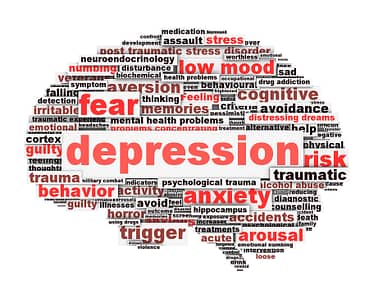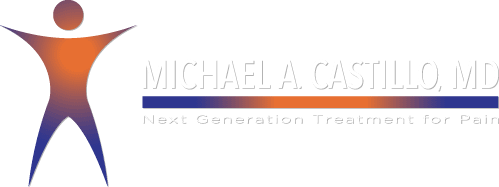Depression plays a significant role in chronic pain—taking just a few steps to get ahead of it can help patients appreciably by giving them more control over their personal situation.
For some people, the stress and depression resulting from chronic pain can become consuming, and have the potential to significantly worsen and prolong the pain. Increased pain can, in turn, lead to increased stress and depression, creating a cycle of depression and pain that can be difficult to break.

Chronic Pain is Unique
Chronic pain is generally defined as any pain that continues more than 3 to 6 months. Please note that this discussion is specifically focused on chronic pain that is not due to cancer or other disease process. This type of pain is also termed “chronic non-cancer pain” or chronic benign pain.
Back pain and neck pain can become chronic in a few ways, for example:
- Some chronic pain may be due to a diagnosable anatomical problem, such as degenerative disc disease or spinal stenosis, that can cause continual pain despite attempts at treatment.
- Prolonged pain appears to set up a pathway in the nervous system that sends pain signals to the brain, even in the absence of an underlying anatomical problem in the spine. In such cases, the pain is itself the disease.
- After spine surgery, it is possible for the patient’s pain to either continue or to become worse. When this occurs, it is broadly referred to as failed back surgery syndrome.
In any type of chronic back or neck pain, it is essential to be aware of the potential development of depression, as depression can prolong and/or worsen the pain.
Often, health professionals will refer to a patient’s “suffering” which is the pain plus its emotional component (e.g. depression). As such, one can have a great deal of chronic pain with little suffering or minimal pain with great suffering.
4 Steps to Proactively Address Depression
Following are several steps to help proactively prevent or manage both the chronic pain and associated depression that may develop:
- Early diagnosis of depression associated with pain.
Many physicians are not necessarily trained to assess for depression during the course of treating pain. Talking to a physician about symptoms of depression, while still in the acute pain phase of pain, can alert a physician to the need to consider treatment of both conditions.While one patient may demonstrate a full recovery from the initial episode of pain, a patient who is more prone to or shows signs of depression and stress, or who has a history of clinical depression may be more vulnerable to developing a chronic pain problem that persists beyond the initial acute pain complaint.An informed physician can suggest a treatment plan early on that treats the patient’s depression as well as their physical pain, giving the patient the best chance at a positive outcome. It is advisable to talk to a doctor if any of the following common symptoms of depression are experienced:
It is advisable for patients to talk with their doctors if they experience any of the following common symptoms of depression:
- A sad or anxious mood
- Difficulty with falling asleep and/or staying asleep
- Feeling of hopeless or lack of interest in previously enjoyable activities
- An increase or decrease in appetite
- Low energy or a lack of motivation
By William W. Deardorff, PhD, ABPP
Updated: 07/01/2016
Continue reading the full article from Spine Health Spine Health here.
 Skip to content
Skip to content
